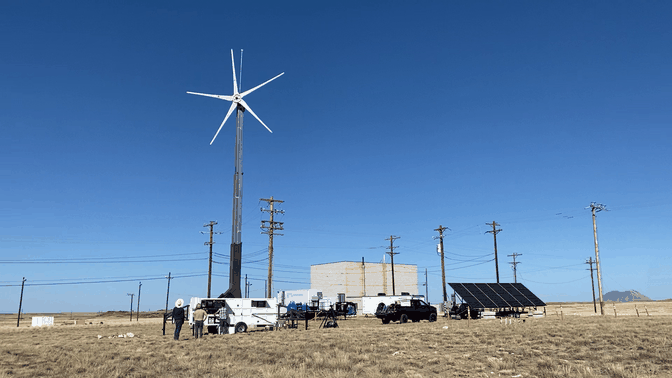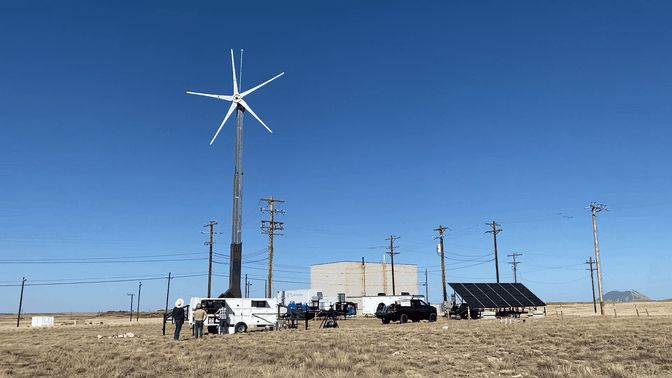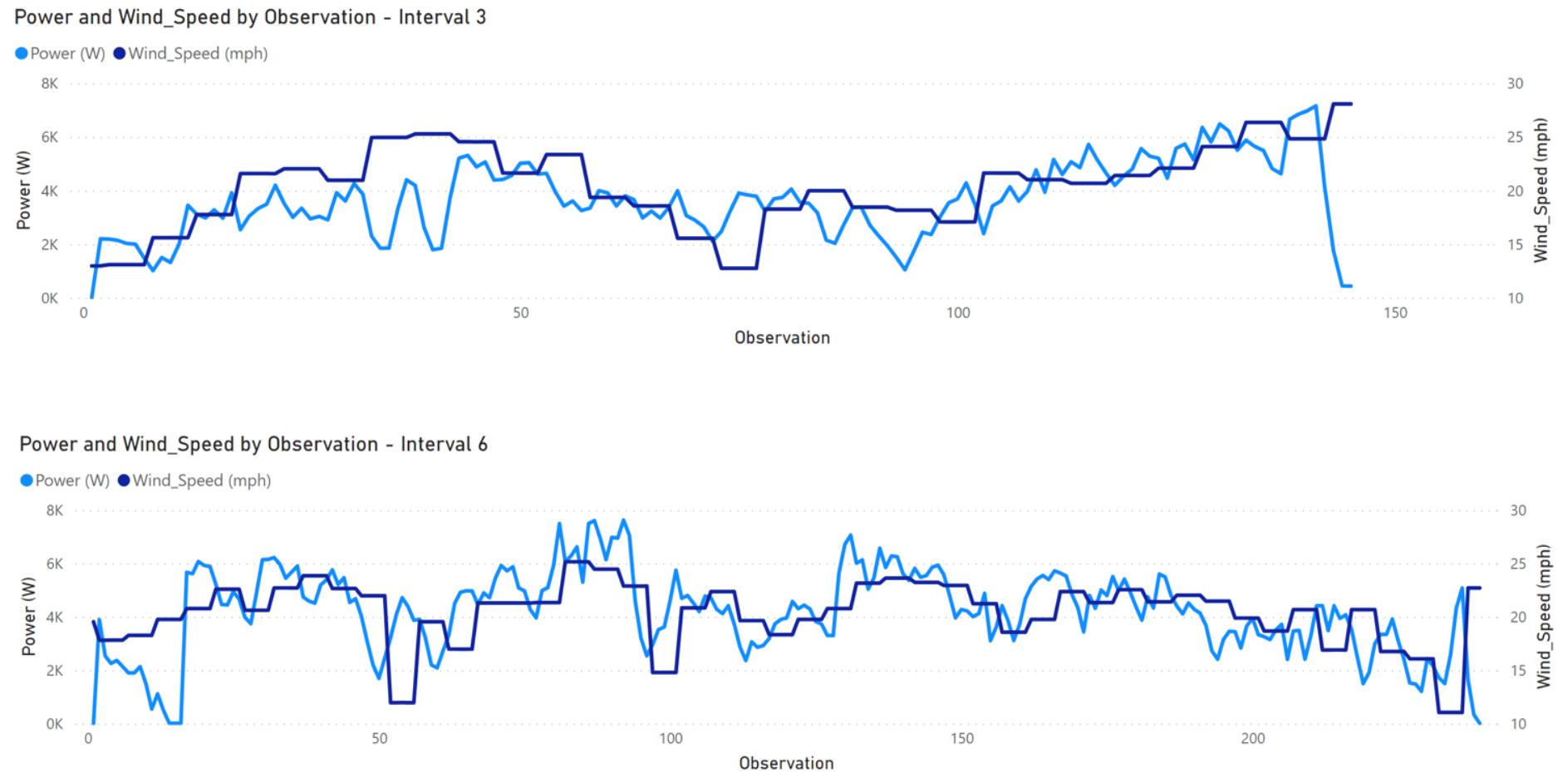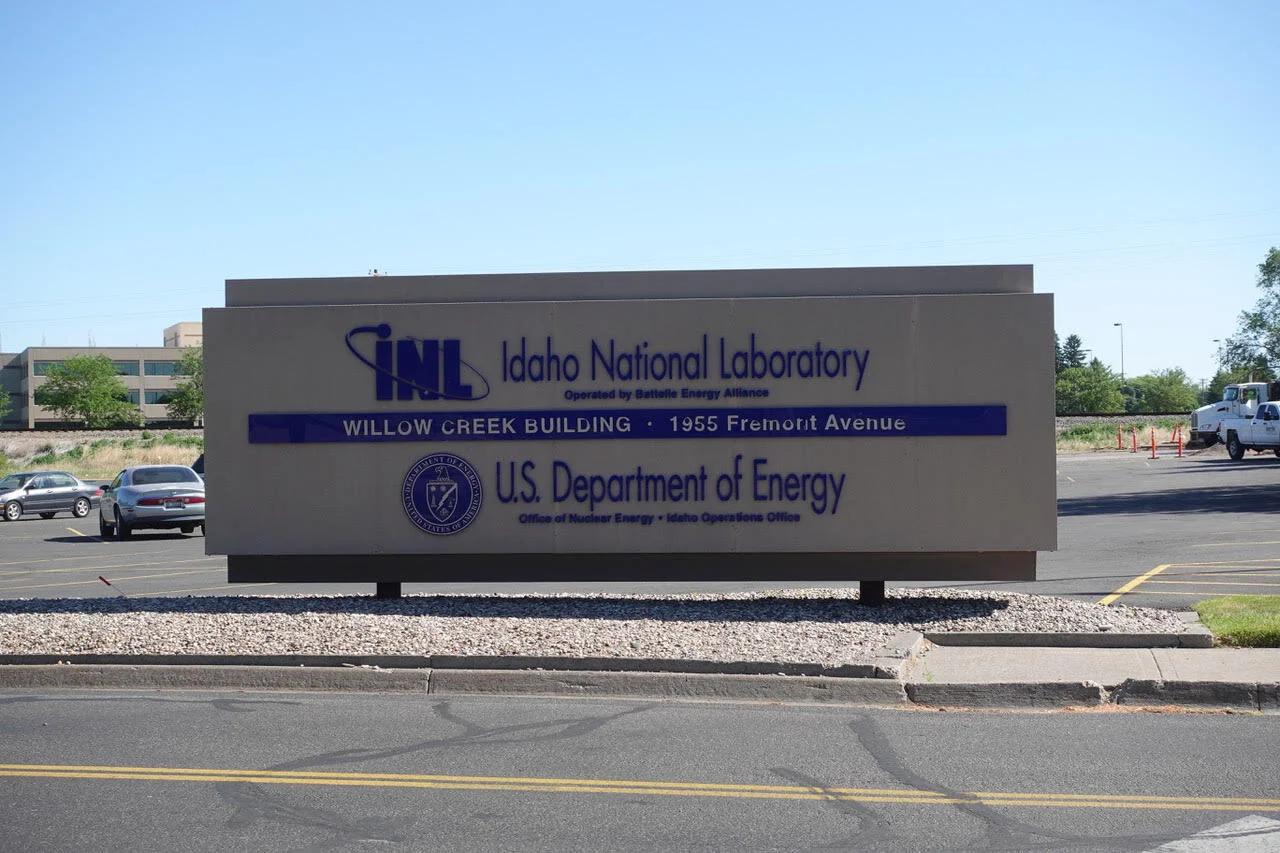

Uprise Energy has formed a partnership with Idaho National Laboratories (INL), a division of the US Department of Energy, to develop innovative renewable energy systems for distributed microgrid applications. To consummate the partnership, INL purchased an Uprise Energy 10kW portable wind turbine for R&D and demonstration purposes.
This blog post is part 2 of a multi-post series documenting our trip to deliver a Mobile Power Station (MPS) to INL. Future posts will include interviews with INL staff talking about the future of distributed energy solutions and their thoughts about our MPS.
As a continuation to Part 1 of this blog series, days 4 and 5 at Idaho National Laboratories were focused on training and demonstration of the Uprise Energy Mobile Power Station (MPS), the world’s first commercially sized portable wind turbine.
While demonstrating the MPS to the INL staff, we also captured data while the wind turbine was engaged. Since we were performing training and also testing different load configurations which were available at the INL CITRC test location, our tests were performed in multiple shorter intervals over two days rather than one long continuous data collection run. Regardless of the configuration, our MPS generates power on demand.
If you have not done so, I strongly recommend that you check out our previous blog post documenting our new partnership with INL and watch the short video from the trip.

Figure 1: The MPS in action at the INL testing site
Although designed to be able to operate as efficiently as possible in low wind speeds, the MPS is still capable of handling higher wind speeds. Anybody that has searched for wind turbine videos on YouTube has certainly seen what happens when a turbine gets overpowered (it’s not pretty). The wind conditions at the test site were mainly in the 20-40 mph (8.9 - 17.9 m/s) range, with occasional lulls to near zero and gusts up to ~60 mph (26.8 m/s). Being able to run the turbine in conditions at both ends of the spectrum was an excellent demonstration for the turbine and it was comforting to see all of the overspeed protection systems - dynamic brake, disc brake, active yaw and lay down features - work flawlessly. Conversely, when the wind speeds dipped, we were able to demonstrate the superior low wind speed performance that the turbine was optimized for.
The elevation of the location also played a role in the turbine blade’s aerodynamic performance, but that gets more technical than is necessary to get into for this blog entry and was not significantly impactful to the performance of the MPS. In general, we couldn’t have asked for better conditions for demonstration purposes.
The two primary differentiators of the Uprise Mobile Power Station are its performance - particularly in low wind speed - and its portability. The portability aspect is easily demonstrated, however the performance requires sophisticated equipment to measure wind speeds and correlate that information with the power being generated by the turbine. In this blog post, we will focus on the turbine’s performance.
In figure 2 below we are sharing two charts of data collected during two different testing intervals. The charts show wind speed and power generation data over time. You can see that there is a strong relationship between the wind speed and the power generated. To read this visualization, the Power generated is in Watts on the left vertical axis, and the Wind Speed is in miles per hour and on the right vertical axis. Observations of one second intervals are on the horizontal axis.

Figure 2: Wind Speed and Power Graphs for two testing intervals
As you can see, during these testing intervals we generate up to 8,000 watts (or 8kW) varying with the changing wind speed. You may notice a dip at the beginning of the second chart. That was a run where the MPS was powered on momentarily, then powered off, then started back up again right away. This illustrates how quickly the power generation starts when the wind turbine is engaged.
To get a little technical, the kinetic energy in wind grows exponentially at the cube relationship to wind speed, meaning there’s very little energy at low wind speeds but the energy grows rapidly. As an example, there's almost twice the energy in a 12 mph wind as a 10 mph, and if you go from 10 to 20 mph, there’s 8 times the energy in the 20 as the 10, not twice as one might assume. This poses a unique challenge of making good power at low wind speed while being robust enough to survive the strong wind conditions. This also reveals the logic behind our proprietary Dancing with the Wind technology that varies rotor RPM to match changes in wind speed, maintaining an optimized tip-speed-ratio and effectively capturing the exponential energy available in variable wind.
The purpose of choosing these charts to use in this blog was simply to show visually that the power generated by the MPS varies closely with the wind speed. At face value this doesn’t seem to be a particularly profound statement. The MPS is a wind turbine, and this behavior may be expected. However, most other wind turbines do not behave this way, and if they do, it’s passive, not active, as is the case with the Uprise technology. For example, the very large scale wind turbines you see on wind farms are designed to hold a steady RPM regardless of the wind speed in order to avoid power factor issues and other technological limitations. However, unlike the large utility scale turbines that can increase swept area to generate more power, the portable Uprise turbine doesn’t have that luxury and therefore, Dancing with the Wind was innovated in order to maximize the energy density of the portable platform.

Figure 3: INL welcome sign
In order for Dancing With the Wind to work, it requires proprietary algorithms and custom electronics. It also requires blades which can react to the changes in wind speed very quickly. Our carbon fiber blades are custom designed and fabricated in house. They are strong and still light weight. They are very responsive to rapidly changing wind conditions due to their low inertia. This is why the power line and the wind speed line on the charts follow each other so closely despite them being on two vastly different scales and being measured by separate subsystems of the MPS.
We are pleased to share these charts as they clearly validate the Dancing with the Wind concept and its efficacy. This is the first time we have shared any captured data publicly in this much detail. This also confirms that the Uprise Energy Mobile Power Station is the most technologically advanced small wind turbine with best in class performance that also happens to be portable, a unique feature in and of itself, leaving no doubt that the MPS is the future of distributed renewable energy.
The continuation of this multi-part blog documenting our journey to INL will contain interviews with INL staff providing commentary about their thoughts about the Uprise Energy MPS and the visions they have for the future of renewable energy. Check back soon!
As always, please feel free to leave comments or ask questions in the comments section. We love hearing from you.
Video from blog post part 1 - delivering the MPS to INL
YouTube Video -AHV71ti14k





